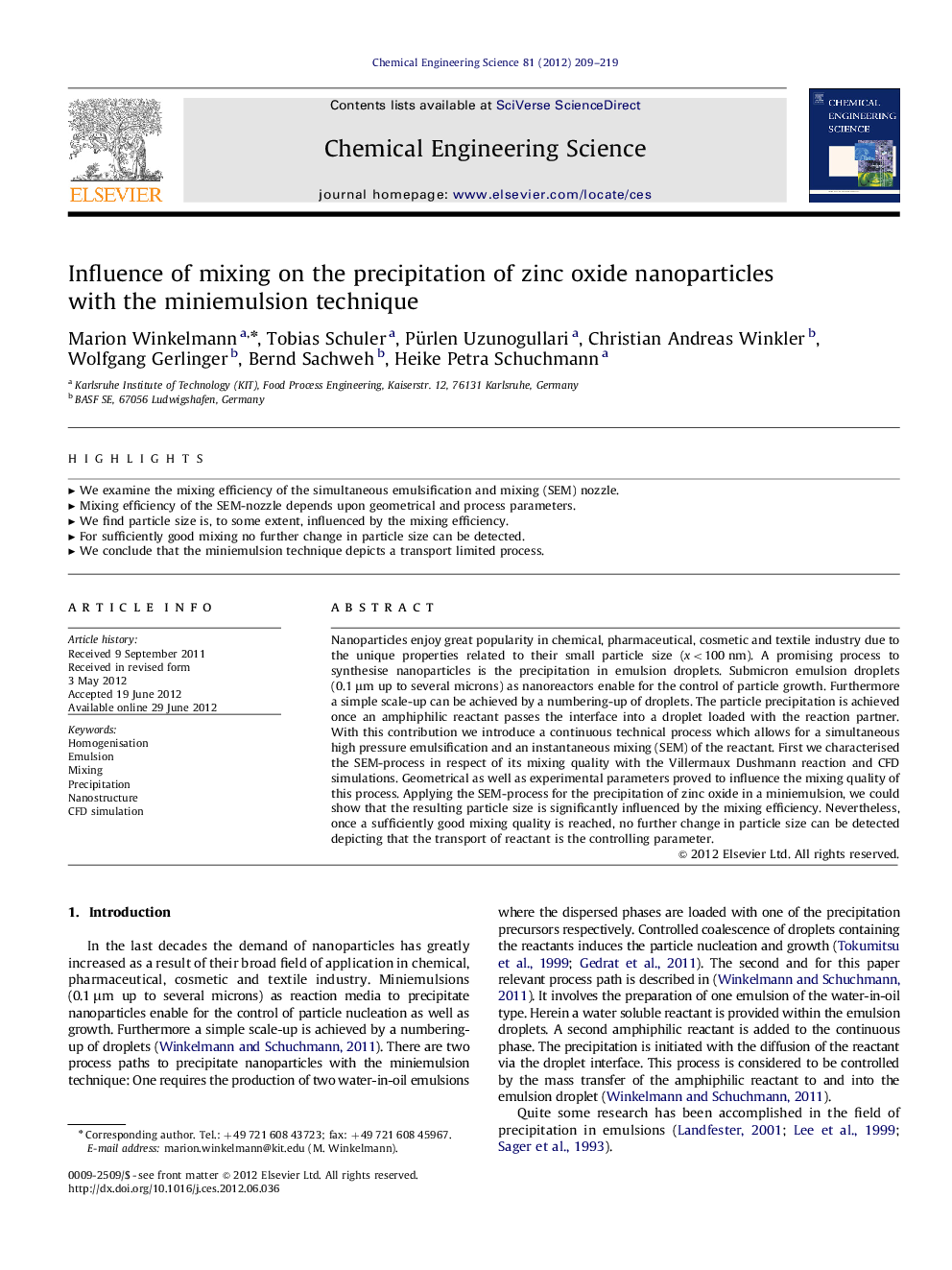| Article ID | Journal | Published Year | Pages | File Type |
|---|---|---|---|---|
| 155519 | Chemical Engineering Science | 2012 | 11 Pages |
Nanoparticles enjoy great popularity in chemical, pharmaceutical, cosmetic and textile industry due to the unique properties related to their small particle size (x<100 nm). A promising process to synthesise nanoparticles is the precipitation in emulsion droplets. Submicron emulsion droplets (0.1 μm up to several microns) as nanoreactors enable for the control of particle growth. Furthermore a simple scale-up can be achieved by a numbering-up of droplets. The particle precipitation is achieved once an amphiphilic reactant passes the interface into a droplet loaded with the reaction partner. With this contribution we introduce a continuous technical process which allows for a simultaneous high pressure emulsification and an instantaneous mixing (SEM) of the reactant. First we characterised the SEM-process in respect of its mixing quality with the Villermaux Dushmann reaction and CFD simulations. Geometrical as well as experimental parameters proved to influence the mixing quality of this process. Applying the SEM-process for the precipitation of zinc oxide in a miniemulsion, we could show that the resulting particle size is significantly influenced by the mixing efficiency. Nevertheless, once a sufficiently good mixing quality is reached, no further change in particle size can be detected depicting that the transport of reactant is the controlling parameter.
► We examine the mixing efficiency of the simultaneous emulsification and mixing (SEM) nozzle. ► Mixing efficiency of the SEM-nozzle depends upon geometrical and process parameters. ► We find particle size is, to some extent, influenced by the mixing efficiency. ► For sufficiently good mixing no further change in particle size can be detected. ► We conclude that the miniemulsion technique depicts a transport limited process.
